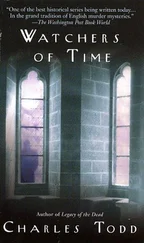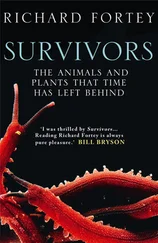Alexander Todd - A Time to Remember
Здесь есть возможность читать онлайн «Alexander Todd - A Time to Remember» весь текст электронной книги совершенно бесплатно (целиком полную версию без сокращений). В некоторых случаях можно слушать аудио, скачать через торрент в формате fb2 и присутствует краткое содержание. Город: Cambridge, Год выпуска: 1983, ISBN: 1983, Издательство: Cambridge University Press, Жанр: Химия, Биографии и Мемуары, на английском языке. Описание произведения, (предисловие) а так же отзывы посетителей доступны на портале библиотеки ЛибКат.
- Название:A Time to Remember
- Автор:
- Издательство:Cambridge University Press
- Жанр:
- Год:1983
- Город:Cambridge
- ISBN:0 521 25593 7
- Рейтинг книги:3 / 5. Голосов: 1
-
Избранное:Добавить в избранное
- Отзывы:
-
Ваша оценка:
- 60
- 1
- 2
- 3
- 4
- 5
A Time to Remember: краткое содержание, описание и аннотация
Предлагаем к чтению аннотацию, описание, краткое содержание или предисловие (зависит от того, что написал сам автор книги «A Time to Remember»). Если вы не нашли необходимую информацию о книге — напишите в комментариях, мы постараемся отыскать её.
A Time to Remember — читать онлайн бесплатно полную книгу (весь текст) целиком
Ниже представлен текст книги, разбитый по страницам. Система сохранения места последней прочитанной страницы, позволяет с удобством читать онлайн бесплатно книгу «A Time to Remember», без необходимости каждый раз заново искать на чём Вы остановились. Поставьте закладку, и сможете в любой момент перейти на страницу, на которой закончили чтение.
Интервал:
Закладка:
My sojourn in Oxford was a very important period in my career. Quite apart from establishing a permanent bond with Robert Robinson I learned to know and made lifelong friends among the host of young chemists who, like me, came to the Dyson Perrins to work with him, or followed him there from elsewhere - Gulland, R. D. Haworth, Baker, King, Erdtman (Sweden), Sugasawa (Japan), Walker, Schlitter (Switzerland), Morf (Switzerland), Ramage, J. D. Rose, Briggs (New Zealand), Watt (Australia) and many others. We also had two refugee professors from Germany during the latter part of my stay -Arnold Weissberger and Fritz Arndt, whose chain-smoking of cigars ensured that his presence in the laboratories was always well advertised!
In 1932 I completed the synthesis of the flower colouring matters hirsutin, pelargonin, malvin, and cyanin, chlorides, and so effectively rounded off the anthocyanin field leaving, as far as synthesis was concerned, only some mopping up operations. Accordingly I was looking around for some new subject when Harold Raistrick asked Robinson if he would like to look at the chemistry of some red pigments in certain plant pathogenic moulds of the Helminthosporium group; the problem was turned over to me and much of my time was devoted to it during my last two years in Oxford. Before getting immersed in that problem I had prepared a quantity of gossypol from cottonseed, but never got around to studying it; indeed, I rather think I still have the material in a bottle in my specimen collection in Cambridge. I dropped it in favour of a very brief foray into the steroids following the first (erroneous) structure advanced by Rosenheim and King in 1932. I began to check certain degradations of cholesterol but abandoned them when the correct structure was put forward shortly afterwards by Wieland and Dane. Thereafter, it is true, I devoted a few weeks to a rather hare-brained scheme whereby I sought to generate a tetracyclic nucleus of the steroid type by a very short route beginning with a somewhat unlikely reaction between hexatriene and methyl cyclohexenone. The first problem was to prepare hexatriene; the literature route via divinylethylene glycol was rather unattractive. While I was doing some preliminary work on possible modifications, Robinson travelled with Professor J. F. Thorpe to Manchester on a consulting visit to the Dyestuffs Group of Imperial Chemical Industries and mentioned my problem to him. Thorpe immediately said there was no need to synthesise hexatriene since it was readily available as a major constituent of the so-called 'railway hydrocarbon', the low-boiling residue left behind in the gas cylinders still used for lighting railway carriages in those days. All that you needed to do was to warm it slightly and pass the gas evolved into bromine whereupon you would obtain a copious supply of hexatriene hexabromide. It was characteristic of Robinson that, before returning to Oxford, he ordered a quantity of railway hydrocarbon from the London Midland and Scottish Railway Company. The stuff was duly delivered in a thirty-gallon metal drum which was dumped in the laboratory yard where, it being high summer, it lay gently hissing and smelling to high heaven. It was closed by a large hexagonal nut which appeared to be immovable. However, aided by the laboratory handyman, a monkey wrench and a hammer, I forced an entry. With difficulty we capped the resulting gusher and managed to collect some of the contents. Following Thorpe's instructions I then used up every particle of bromine in Oxford but obtained only a mixture of ethylene dibromide and butadiene tetrabromide contaminated by - at most - a trace of the hexatriene compound. I returned to the preparation of divinylethylene glycol and the railway hydrocarbon - at the urgent request of the local inhabitants - was returned to the railway company.
3. Edinburgh, London and Pasadena
My 1851 Senior Studentship was extended for a third year and was due to expire on 30 September 1934. By the early part of that year I had therefore to begin casting around for something with which to support myself. It was not an easy time for finding an academic position, which I would have preferred to one in industry, although I did not rule out an industrial career; but industrial jobs were about as scarce as academic ones. I remember being approached about taking charge of a laboratory at the Courtauld Institute of Art which was of no interest to me, and also about an assistant lectureship at Bangor which I did not find at all attractive. However, in May 1934 George Barger, then Professor of Medical Chemistry in the University of Edinburgh, visited Oxford to seek Robinson's advice. Barger, who himself was half Dutch, was a friend of B. C. P. Jansen of Amsterdam who had in 1926 first isolated the anti-beriberi vitamin B1 from rice hulls in Batavia. Jansen, who did not consider himself a chemist, had heard that both the IG-Farbenindustrie in Germany and Merck & Co. in the United States had embarked on the structural investigation of vitamin B1, with a view to its commercial synthesis, and he felt that he really ought to do something himself. He therefore wrote to Barger and asked if he would take up the problem. Barger was naturally interested but felt he was not really qualified for the job since it would involve working with very small amounts of material - all that was available from Jansen was about five milligrams of crystalline vitamin and a description of the isolation procedure from rice (which contains a few milligrams per ton). So he came to Oxford to ask Robinson what he should do. Robinson suggested he should ask me since I was a natural product chemist and I had acquired micro-techniques in Germany. I jumped at the offer, since it gave me the chance of doing exactly the kind of work I wanted to do; vitamins were just becoming accessible to organic chemists and I was fascinated by the possibility of finding out why they were so important, i.e. what function they performed in living creatures. So I went to Edinburgh in the summer of 1934 on the basis of a Medical Research Council grant eked out by the promise of some part-time demonstrating in medical chemistry; this meant, overall, a cut of around twenty-five per cent in my income but I reckoned it would be worth it.
Barger was a close friend of Marcus Guggenheim, the Research Director of Hoffman La Roche & Co. of Basle, and through him was in close contact with that firm. As a result the firm agreed to do the preliminary concentration of vitamin B1 for me and send to Edinburgh bottles of the concentrate which, corresponding in weight to less than 0.1 per cent of the original rice hulls, made it possible for me to isolate small amounts of vitamin for study; without that help the scale of operations needed would have been impossible for an academic laboratory. Perhaps this would have been even more true in Edinburgh than in some other places, for the Medical Chemistry Department was not only inconveniently housed in the massive Victorian pile of the medical school but, when I arrived, the general level of equipment was deplorable. To aid the vitamin B1 work Barger got a substantial grant from the Rockefeller Foundation and with it I was able at least to ensure that we got adequate glassware and some minor instruments. But I was not able to spend more because of Barger's extraordinary attitude to the grant; for some obscure reason of his own, he felt it was up to him to show how economical he could be, and he was determined to return as much as possible to the Rockefeller Foundation. In this he was successful, and, indeed, when I finished the work on vitamin B1 he spoke with pride of how it had been done with so little Rockefeller money!
I admit that when I first saw the Medical Chemistry Department my heart sank and I was exceedingly depressed. But there was one bright spot which helped to restore my optimism. This was the presence of Dr Franz Bergel. An Austrian by birth, he had been a young Privat-Dozent in Freiburg when, following Hitler's accession to power, he came to Edinburgh as a refugee supported by a grant from Hoffmann La Roche obtained through the efforts of Guggenheim and Barger. We quickly struck up a friendship which has lasted to this day, and he decided to join me in the vitamin B1 work. We did in fact work together for four years, first in Edinburgh and then in the Lister Institute, before we parted in 1938 - I to Manchester University and he to the new research department of Roche Products Ltd at Welwyn Garden City. I soon gathered round me a rather motley group of people - Barger's laboratory was much frequented by foreign students, perhaps because of his wide international contacts. At any rate, I soon had working in the B1 field not only Franz Bergel but Anni Jacob from Frankfurt (she remained with me until 1944), Juan Madinaveitia from Madrid (who later married Anni), Karimullah from Lahore, Keller from Basle and Fraenkel-Conrat, a German refugee who is now in Berkeley, California.
Читать дальшеИнтервал:
Закладка:
Похожие книги на «A Time to Remember»
Представляем Вашему вниманию похожие книги на «A Time to Remember» списком для выбора. Мы отобрали схожую по названию и смыслу литературу в надежде предоставить читателям больше вариантов отыскать новые, интересные, ещё непрочитанные произведения.
Обсуждение, отзывы о книге «A Time to Remember» и просто собственные мнения читателей. Оставьте ваши комментарии, напишите, что Вы думаете о произведении, его смысле или главных героях. Укажите что конкретно понравилось, а что нет, и почему Вы так считаете.










